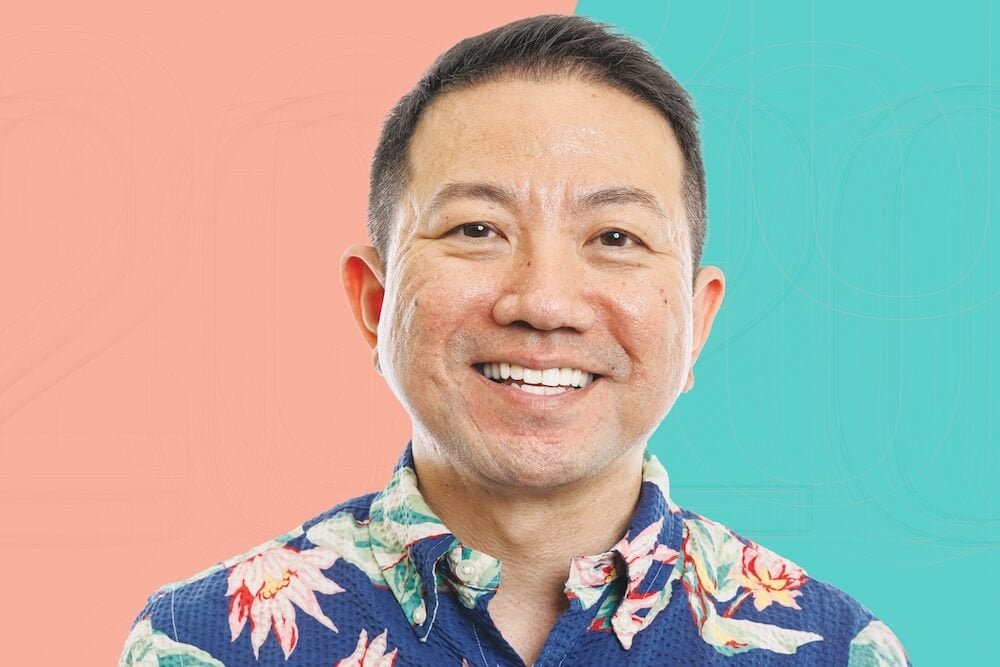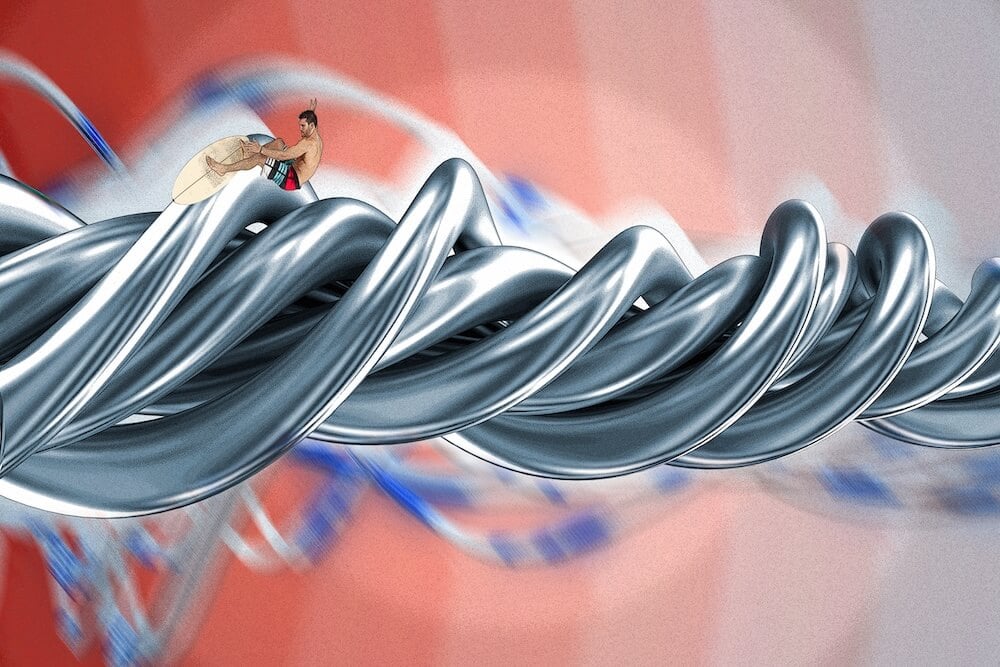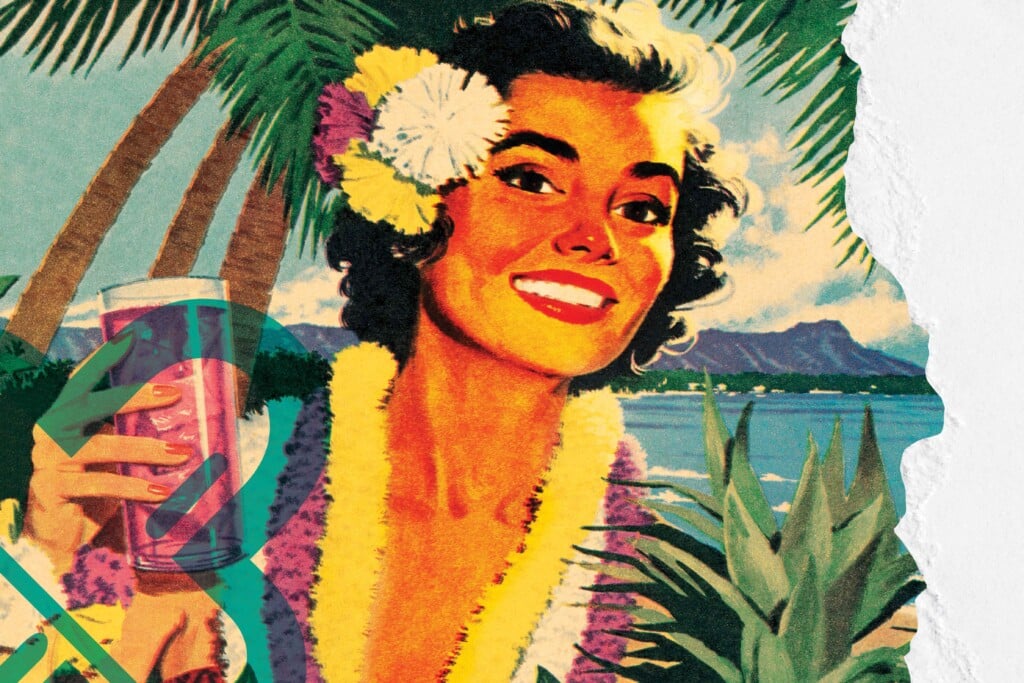Nainoa Thompson and Harry Kim on What it Takes to be a Successful Leader
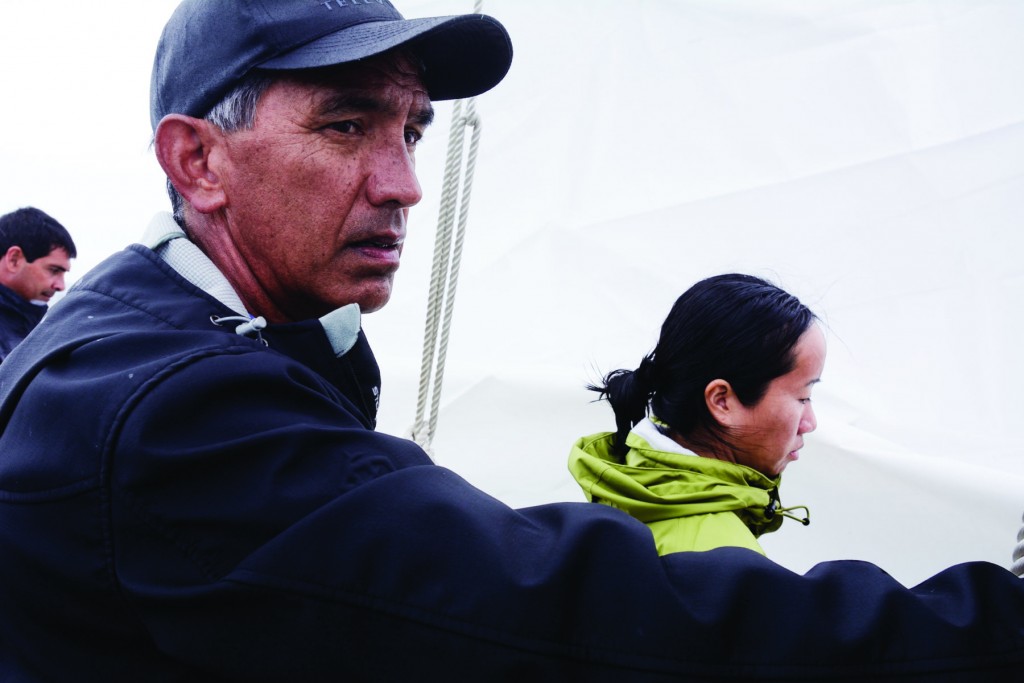
In last month’s edition, Hawaii Business published a conversation with seven of Hawaii’s best-known leaders: George Ariyoshi, John Dean, Walter Dods, Mark Dunkerley, Constance Lau, Kathryn Matayoshi and Colbert Matsumoto. They discussed the qualities of great leaders, the role of mentors, whether leadership can be learned, planning for succession and some of the other challenges facing leaders today.
Nainoa Thompson on Leadership
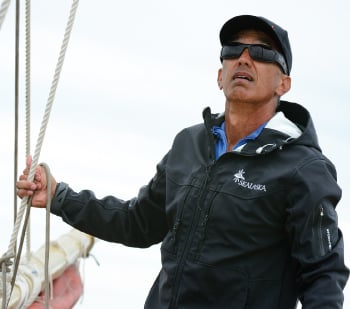 When we asked prominent local business leaders who they thought were Hawaii’s best leaders, the name Nainoa Thompson kept coming up. Thompson is a renowned leader of the Polynesian Voyaging Society and a navigator of Hokulea as it sets off on a four-year circumnavigation of the globe. But, if you ask Thompson himself, he will say that he is not a leader, but has been inspired by great leaders and visionary people. Here is Hawaii Business’ conversation with Thompson about leadership, and how learning about leadership is itself a difficult voyage that requires courage and training.
When we asked prominent local business leaders who they thought were Hawaii’s best leaders, the name Nainoa Thompson kept coming up. Thompson is a renowned leader of the Polynesian Voyaging Society and a navigator of Hokulea as it sets off on a four-year circumnavigation of the globe. But, if you ask Thompson himself, he will say that he is not a leader, but has been inspired by great leaders and visionary people. Here is Hawaii Business’ conversation with Thompson about leadership, and how learning about leadership is itself a difficult voyage that requires courage and training.
Following that is our conversation with another unique local leader, Harry Kim, the former mayor of Hawaii Island. Like Thompson, Kim speaks with an empathy and sensitivity that’s rarely associated with power. As they talk about the experiences that shaped them, both Kim and Thompson stress tradition and old-fashioned values.
Hawaii Business: How did Hokulea and the experience of voyaging affect your development as a leader?
Thompson: I don’t see myself as a leader, other than being someone who’s been so heavily influenced by other powerful leaders. By people like Herb Kawainui Kane, who led a revolution in culture, led a revolution in reframing how the world sees the Native Hawaiian people, in how people think about the Pacific Ocean and Pacific Islanders. These leadership skills come from an extraordinary ability to be a powerful visionary.
If you think about Hokulea and the genesis of that idea, where did it come from? It came from Hawaii, in a way, but the first idea for Hokulea came from a phone call from a post-doctorate anthropologist in Santa Barbara, Calif., to an artist in Chicago. That was Ben Finney and Herb Kane. These were the leaders.
What these two men had in common was they wanted to set things right. They were really motivated by this issue of cultural justice. Ben’s motivation was Thor Heyerdahl, who has this voyage (on the Kon-Tiki) in 1947, writes this book, makes a movie and creates a worldview about Pacific Islanders. (His theory was that the Pacific Islands weren’t settled by voyaging Polynesians, but by people sailing west from South America.)
Another anthropologist, in New Zealand, by the name of Andrew Sharp said Thor Heyerdahl was not correct, but the ancient Polynesians and the Hawaiians couldn’t navigate more than 100 miles. To him, the discovery of Hawaii by the Polynesians was nothing but a mistake. But, Ben Finney believed, scientifically, as an anthropologist, that Thor Heyerdahl and Andrew Sharp were both wrong. Ben wanted to set the story right. Also, Ben was motivated to drive change – and leaders, many times, are navigators of change – so, in 1973, he makes this telephone call to an art teacher in Chicago. Their idea was to build a voyaging canoe and prove Heyerdahl and Sharp were wrong.
So, you have these men who have the imagination, the background and they did their research. But why wasn’t that phone call made from Manoa to, say, Waikiki? Because, in Hawaii, you couldn’t see it, you couldn’t see the canoe. They took the power of that vision and actually made it real, made it happen, by building the voyaging canoe – the first one in 600 years. To me, that’s leadership.
And that’s why I don’t say I’m a leader. I’m a man who’s been driven – the instructions have been set in my life – by powerful leaders. In other words, I didn’t choose my destiny. My life was taken in the direction this voyaging canoe and these leaders told me to go. It really wasn’t by my intention; it was by following extraordinary people.
Hawaii Business: What other examples of leadership came from the early days of the Polynesian Voyaging Society?
Thompson: You’ve got a painter from Chicago and an anthropologist from Santa Barbara. Who’s going to navigate this canoe once it’s constructed? Now, you’ve got Mau Piailug, a navigator from Micronesia who could barely speak English, who came and took Hokulea to Tahiti when nobody else could do it. At that time, there are no traditional navigators left in Polynesia. There are only six in Micronesia; Mau is the youngest. I wasn’t there, but the story I was told was that, when they asked Mau if he would make this voyage, almost immediately he said yes.
Break down that leadership decision: He’s going to be sailing in a canoe that will be eight times bigger than his canoe. He’ll be sailing on a voyage that will be six times longer than any voyage he’s been on. He’ll be sailing across the equator and seeing stars that he’s never seen before. He’ll be commanding a canoe that’s not even built yet. And he’ll be sailing with a crew that’s neither been selected, nor has he met. And, yet, he said yes. That’s a leadership decision: Somebody needs to lead this canoe on this voyage and nobody else can do it.
Mau is a master navigator. He’s courageous. He wants a challenge. That’s obvious. But behind that leadership decision is a whole level, I think, of compassion. Mau was at a time in his life when there were enormous changes in his homeland of Micronesia. He comes to Hawaii and sees a place that’s almost absent of things Hawaiian. I do believe that Mau, in his genius, knew that if he didn’t lead this voyage, it wouldn’t happen. Or worse, it would happen and it would fail. So I believe that Mau – and I lived with him for a year – made those decisions to ensure Hokulea would be successful. That’s how I define leadership: Stepping up. Knowing what’s the right thing to do, and making it happen regardless of the consequences.
Hawaii Business: Hokulea’s successful voyage to Tahiti, in 1976, was very inspiring for Native Hawaiians, but there was also a lot of conflict, both about the purpose of Hokulea and the role played by non-Hawaiians. How did this tension affect the evolution of leadership in the voyaging community?
Thompson: In the Hokulea story, there was success, but there was also failure and confusion. A lot of the time, the difficulties were because there was an absence of leadership. And, in the void, nobody really knew where to go or what to do. In the absence of someone standing up and setting a course to a destination that was meaningful, that would bring people together and unite them, recognizing the need to bring the community with you – in the absence of all those qualities, it’s chaos. I think, in some ways, leadership is learned from clear examples set by people who you would follow, people who you believe in, people who you would support to make sure their dreams, their vision of leadership would be successful. In the case of Hokulea, a lot of that was about educational justice – telling the true story of the Native Hawaiians. It was about the rediscovery of who we were as a people. It was about redefining our values and our beliefs. It was about reclaiming our culture in a way that made us proud. In doing that, it set the pathway for health and well being from the inside out, from the spiritual side. And the road wasn’t easy. Success in leadership meant some people had to stand up and take the ball and run with it and hold it together, because it was so exhausting.
What I’m saying is that the evolution of leadership in the voyaging community wasn’t clear cut. It wasn’t mapped. It wasn’t strategic. There were those who had to stand up and – fundamentally, it’s simple – do the right thing and have the courage to be there. So, you have people like Abraham Piianaia and his son Gordon, who came in and helped with that leadership. You have Herb Kane and Eddie Aikau and many others. And, if leadership is doing the right thing no matter what the risk is to you personally, the greatest leader I know is my dad. My values, my beliefs, the things I stand for, really come from other extraordinarily great leaders. That’s why I will never claim that I’m the leader. I’m just a student of great leaders.
With the failed 1978 voyage and, especially, the loss of Eddie Aikau, Hokulea has also experienced tragedy. That kind of crisis can either galvanize leadership or cripple it.
With Hokulea, when we lost Eddie, it was such a painful and dangerous time. The man was so deeply loved in Hawaii. The love was so deep, the loss was like a paralysis down to the bone, so you can’t see to be a visionary, to lead, to know what’s the right thing to do. No, we knew what was the right thing to do; we just didn’t believe we could do it. There wasn’t the leadership that had the strength to break through all the layers of hurt that were associated with his loss. That single moment, when we lost Eddie, was kind of lightning striking the community and dividing it into broken pieces.
Part of the community wanted to put the canoe on exhibit up on the Bishop Museum lawn so nobody would get hurt. The other part of the community said, “If we do that, how many generations have to go by before we can forget how Hokulea’s story ended and our children may have another shot at renaissance?” The danger was that the Hokulea story would become a legacy of tragedy, and it was expected and predictable, because it was Hawaiian. If it never sailed again, that’s where it would take us – to the idea that Hawaiians cannot govern themselves, that they cannot find their own sense of well-being, that tragedy is their destiny, that they’re going to fail more than they succeed. That was kind of the chronic definition of Native Hawaiians at that time.
That was a dangerous, dangerous moment in time. But us guys were so broken we couldn’t see. The shame was so chronic and overwhelming, all I did was hide. That was my only response to life, I was so ashamed. I was only happy and whole in the ocean, by myself. I would look at the stars at night, by myself, knowing I would never navigate again, I would never have a chance to do that again. The great visionary was my father. He didn’t know how to get this canoe to Tahiti; he just knew it had to happen. So, he took a broken leadership team and brought it together. I’ll never forget; it was one of the most powerful leadership lessons I’ve ever seen.
One night, my dad finds me in the yard. He comes and puts his hand on my left shoulder – but he doesn’t look into my eyes, and he knows that I won’t look into his, because of the shame – and he tells me, “Me and Mom have been talking. We know you need to go. We’ll be there to let go the lines, and we’ll be there when you arrive.” That’s leadership. And then he says, “We don’t know how to do this. It’s like a moonshot. But get your leadership team together tomorrow; I want to talk to them.”
We met in the biomedical building at UH. I remember, when we went into that room, there was so much pain, because we all felt responsible for Eddie’s loss, that we couldn’t even look at each other, let alone talk to each other. But Dad gets up in front of everybody and sets the sail plan for leadership, the sail plan for success. He says, “OK, guys, you’ve got to go to Tahiti, so here’s what you’ve got to do: Understand the power of vision. See your island. Know the way. Stay on it. But along the way, know who you serve. This voyage is not for you.” He clearly understood it was about the Hawaiian people. It was about children. It was about what was at risk. It was not about you.
That was a leadership statement. Then he said, “You guys are broken and you’ve got to come together. If you can’t come together, nothing can come together.” He said, “What you need to do is agree on a set of values and beliefs that you’ll never compromise. It will be these core values that will hold you together as a leadership team when you go through all these challenges.” Then, my Dad said, and this is really the blueprint for voyaging today: “You need to have the community with you, because you’ll do nothing without the community. All you will have is your vision, your values, and your beliefs. Take it to them. Spend time talking to them about what you believe in and what you stand up for. If it makes sense, they’ll be there.”
Then he said, “Here’s the hard part: You guys don’t know how to do this, so you’re going to have to go relearn.” He said, “The piece that’s missing, that you guys have never honored, is the importance of training.” And he said something amazing. He said, “You guys come up with a list of all the things that you need to train for, and you give the list to me and I’ll hold you to it.” He said, “Don’t ever talk about a departure time. Don’t set a date. Because you have to earn the voyage in the preparation.” He said, “Ninety-five percent of the success of this voyage will be executed and completed before you go, if you train hard enough.”
This is all in just 45 minutes. The last piece he said was, “When you finish your training, all of you have one question to answer: Is the voyage worth the risk? If it’s worth the risk, then you should have the courage to let go of the lines.” And, remember, he was saying that to his son, because he knew his son had to go. The power of the father, at that single moment, was the willingness to let his son go, and maybe not come back. Except my Dad, he saw our success.
Hawaii Business: How did this affect your role as a navigator and a leader in the voyaging community?
Thompson: 1976 was the first voyage, the voyage that Mau navigated to Tahiti. But, because of all the conflict, Mau wasn’t happy with us; he didn’t even navigate back with us from Tahiti. He went home and, when he left, he said, “Send my clothes to my house. Nobody come look for me, because nobody’s going to find me.”
That’s what Mau said in 1976. Flash forward to 1978, when my dad pulls us together in the UH biomedical building: Now, everything is solid. Everything just makes sense. We have our kupuna; we have our wisdom; we have our elders saying, “You’ve got to come together.” So the leadership path was paved for us. I didn’t create it. It wasn’t in my DNA. It wasn’t in my wisdom. It was all mapped out for us. It was just a matter of execution. Except, as we all went out of the biomedical building – I still remember the bright, bright sun – my dad comes up to me and, in sort of an angry, personal voice, he says to me, “So, you want to navigate to Tahiti. Where’s your teacher?” But Mau had had it with Hawaii; he was done. He’d had enough. And the primary reason he was done was that he didn’t trust the leadership. At the time, it wasn’t there. It was fractured. As amazing as the voyage was in 1976 – and it was an enormous accomplishment – for Mau, we broke the rules. But my Dad said, “If Mau won’t come, you don’t go. So go look for him.”
Again, leadership came from hanging around amazing leaders that knew the way to success. So, I go to Micronesia. Mau lets me find him. He had heard the story of Eddie, and of all the layers of genius that man had, at the top was a deep sense of compassion for people. He didn’t want to come back to Hawaii, but I asked him. I told him, “We need you to come back. We don’t need you to show us the way to Tahiti, but will you come and teach?” That’s a very big question, because navigation is power in his culture. Knowledge of it is fiercely protected. It stays in the family. You don’t give it away, especially to people on the outside. But I didn’t know that. And, to make a long story short, in about two months, he does come. When you look at the success of voyaging, you find extraordinary people. The way I’ve always viewed Mau is he comes to Hawaii and takes us, like children, by the hand and pulls us through a window in time that nobody else on the planet could do. Just him. That’s a leadership decision.
But, when Mau came back to Hawaii, he said to me, “When you think you’re ready to go, you go, and I go home. When I think you’re ready to go, I go home. I’m not going with you.” And he did what he said he was going to do. He came to teach. But that taking us by the hand – the mentor, the teacher – that’s leadership. Dragging us through that window and taking these young people who want to stand up for what’s right, that’s leadership. Again, you can clearly understand that I wasn’t the leader. I was just the luckiest person on the planet who was always up against these amazing leaders – Herb, Finney, Eddie, Mau and many more. Common among these individuals was a deep sense of standing up for what’s right, having the conviction and the belief they can create change and, that, in the change, it would be good for all people. What was also consistent about them was that they were with you the whole way. You need them, and they’re there. And they stayed there.
So, what we had at that time was an amazing older generation that came together – a painter, a lifeguard, an anthropologist, a navigator – from different parts of the world, from different walks of life, to help you find your way and to help you fulfill the things you needed to fulfill, which were really issues of justice. All this was with the belief that you were going to make a better world.
Hawaii Business: Today, as Hokulea prepares to set off on a four-year, round-the-world voyage, today’s leaders – the heirs to Herb, Eddie, Mau and your father – are getting old themselves. Is the next generation going to be ready to step up and lead?
Thompson: All the older people in the voyaging world – many of whom are looking at the end of their voyaging time; some are even looking at their mortality, because they’re in their 70s – but every single healthy person from the 1976 trip is going to sail part of this voyage. The older generation sees this as their final kuleana. It’s not just about what you want to do, it’s about what you’re responsible for: that’s to teach. And everybody from the younger generation wants to sail with them.
On the one hand, I don’t agree with the notion that young people don’t want to step up. That’s not my experience. But, they’re going to step up to something that’s mapped out. As I said, 95 percent of success is training. You create that success before you even go. We work so hard to do that, there’s a sense there isn’t much risk. Young people today are somewhat crippled, in terms of the ability to feel the sense of the responsibility of leadership, because they didn’t know Mau, they didn’t know Eddie, they didn’t know my dad, because they weren’t born yet. So, you have my generation trying to transmit these incredible experiences we had when we were their age. We had an amazing, amazing group of elders leading under an enormous amount of pressure, when everything was at risk and so fragile. For people today, we engineer all that out in the training. We take it away from them somewhat. But, to say they’re uncommitted, I don’t think that’s true.
I’ll tell you why. Look at some of the profiles of these younger people. For example, Haunani Kane is a Native Hawaiian, olelo Hawaii – she speaks Hawaiian – she has a beautiful family from Kailua, she’s a Kamehamaha Schools graduate. And she’s one of two geoscience master’s graduates from the 73,000-student body of the University of Hawaii system. Her whole focus is on sea-level rise through climate change. She’ll be part of the canoe experience. She’s the head of the whole scientific part of the voyage, coordinating for the big schools at the university – School of Ocean and Earth Science and Technology, Center for Microbial Oceanography, Hawaii Institute for Marine Biology, Kewalo Lab – as well as MIT and Stanford. She’s the head of all that. That takes leadership.
So, I don’t agree with the statement that young people don’t want to lead. I can go on and on about other people if you want more proof of that. But you understand they didn’t have the same learning experience we had. The difference with my generation, I believe, is that we had to go. Leadership wasn’t an option for us; it was just something you had to do, whether you wanted to or not. These young people don’t have to go.
Hawaii Business: Is there a conscious effort to prepare for the succession in leadership?
Thompson: The beauty of this voyage is the mixing of these generations. The ones that are older – those that are healthy – are all going to come, because they know this may be their last opportunity to pass it on. So, on the succession leadership piece, I am really, really honored to hang out with the family of the canoe. This older generation is really committed to leadership succession. After we’ve sailed two years around the world, and we’ve entered Polynesia again from the east, everybody has agreed that, at Rapa Nui, all the older guys get off the canoe. So, you design and engineer succession at a moment of time and place. It’s not just an idea; it’s a reality. When you get to Rapa Nui, all you older guys get off. Your job is to complete the training by the time you get there. When this canoe comes home to Hawaii, you won’t see any of us on board.

